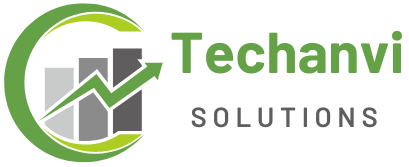
Search engine optimization (SEO) includes so many different nuances that a lot of specialists, especially beginners, feel lost and do not know where to start. Among the most complex aspects of SEO is ranking for keywords.
The following article will cover 7 effective tactics you can use to improve your site’s keywords search engine ranking.
What Are Search Engine Rankings of Keywords?
Search engines consider many factors when ranking sites, and key queries are among the most important ones.
In simple terms, SEO ranking for keywords is how your site ranks on search engine results pages (SERPs) for particular queries. I.e., which position your page is in the search results list.
When a user wants to find specific content, he enters the keyword into the search box of Google or another engine, and the system displays the relevant results. Your site ranks somewhere in those search results.
The higher the site’s position in search results, the more traffic you will receive because most users pay attention only to the results given at the top. They assume that those are pages that are most relevant to them.
Any business needs to rank well for the right keywords. After all, it is known that 75% of users do not even go to the 2nd page of search results.
Since the competition is very high, everyone is trying to win this race to get to the top, which means you need to use all available resources.
Is Your Website Performing As It Should?
Before improving your search engine rankings, you should check whether the site is optimized or not. One of the most important indicators of a website’s performance is its loading speed. After all, the purpose of attracting traffic to the site is to turn visitors into leads, and this will not happen if they leave the page immediately after clicking on it because of its long loading time.
You can test the website’s speed on Google PageSpeed Insights. For example, below is a screenshot of the Walmart website loading speed test.

What should you do if the site loads too slowly? Each case is different, but the following actions may help:
- Optimize Magento TTFB (Time To First Byte) or a similar indicator on your platform;
- Disable unnecessary resource-hogging plugins and add-ons;
- Optimize and downsize images;
- Use caching techniques;
- Apply a Content Delivery Network (CDN);
- etc.
7 Steps to Improving the SEO Ranking for Keywords
Now, let’s find out how to improve your SERPs positions for the selected keyword phrases. Here’s a basic plan of actions that you can take as the starting point for your SEO strategy.
1. Measure Your Current Positions
The first thing you need to do is find out your current SEO ranking for keywords. After all, you have to know the starting point to realize when your positions have improved.
Check the initial positions for the used keywords (you can use the Google Search Console for that), and then you will be able to mark when your efforts are paying off and understand which SEO tactics are working best.
2. Check What Keywords Users Are Searching for to Find You
Seeing what queries people use to find your site and analyzing the keywords you’re already promoting will help to optimize the content. This can be done in Google Search Console.
An example of the Google Search Console report on the queries by which users find your site is shown in the screenshot below.

3. Concentrate on the Quality of the User Experience
It is essential not only to attract users to your site but also to retain them. That’s why you should check such issues as user-friendliness of the design, convenience, and clarity of navigation, etc.
Some of the things you can do:
- Make your website mobile-friendly;
- Achieve unity of elements;
- Use proper calls to action;
- Add photos and videos;
- Use the white space wisely;
- Improve the search feature’s functionality.
An example of a successful search bar design is shown below in the screenshot from the Vitamin World site. When you enter a search query, the search displays a mini description of the products with names, main characteristics, and prices, which is convenient for the user.

4. Focus on the Content Quality
Make sure that the content on the site (both already posted and future) is valuable and relevant to visitors and meets their needs and desires. After all, search engines consider the quality of content when ranking pages and how much time users spend on the site.
Some quality content creation best practices are:
- targeting a niche subtopic;
- writing unique content;
- using simple conversational language;
- avoiding passive voice;
- including visuals;
- editing and proofreading;
- proper formatting;
Keywords should be placed evenly throughout the content in a natural way. Don’t forget to include them in the header and H1 and H2 tags, heading, Meta title, description, and picture names.
5. Optimize Title Tags and Meta Descriptions
This is important for a relevant preview (snippet) of your site in the SERP. You should include keywords in title tags and meta descriptions and make them clear and helpful. Meta tags should give both search engines and users an idea of what content is presented on the site and compel them to click.
You can see an example of such a snippet in the screenshot below.

6. Use Long-tail Keyword Phrases
Long-tail keywords usually consist of 3 to 5 words. They are more specific than common terms, which allows you to target narrower audience groups.
Such keywords are less competitive and better reflect how people make search engine queries. By applying these keywords, you can attract better traffic to your site, which will lead to more conversions.
The screenshot below shows examples of long-tail keywords.

Longer queries have less competition, making it easier to get to the top of the search results with them. If you focus your attention on this keyword type, choosing those that are most relevant to the specifics of your business, you will be able to get a higher volume of targeted traffic.
7. Identify the Questions that Matter to Your Target Audience
Determine the questions related to your business that the target audience asks most often. Then, write competent answers to them in the blog posts or create an FAQ section on your site. This will allow you to move up in the SERPs and provide a chance to get into the “People also ask” section on Google (shown in the screenshot below).

To Summarize:
If you use SEO to enhance website optimization, you need to know that SEO ranking for keywords is a significant part of the process. The main goal is to meet the requirements of search engines and the target audience. Your site’s position in Google and other search engines will improve if you succeed.
The growth of keyword positions used on website pages will help you increase traffic, which means you will get more leads. Therefore, it is worth paying proper attention to improving search engine rankings without any delay.







